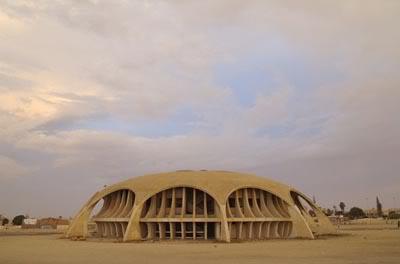Propaganda By Monuments, CIC Cairo
An exhibition, publication and events programme at CIC and offsite at the Townhouse Gallery Factory Space. Exhibition preview: 7pm, Sun 30th January 2011
Hasan & Husain Essop
Angela Ferreira
Dan Halter
Runa Islam (offsite)
Iman Issa
Ahmed Kamel
Kiluanji Kia Henda
 Icarus 13 by Kiluanji Kia Henda.
Icarus 13 by Kiluanji Kia Henda.
Calling all enterprising businessmen! The import opportunity of a lifetime presents itself. The Moscow City Council has decided to dismantle the hundreds of monuments to Vladimir Illyich Lenin which grace its crowded public buildings and empty market-places. Cities throughout the crumbling Soviet Union will follow suit. We ask you: where else in the world is there a ready market for statues of Lenin but in South Africa? Jump right in before the local comrades snap them up for nothing. From Propaganda by Monuments by Ivan Vladislavi?, 1996 (South Africa)
In April 2010, a monument to the African Renaissance was unveiled in Dakar, Senegal. Higher than the Statue of Liberty, as impressive as Leninist effigies, the monolithic figures – a semi-clad woman and small child carried along by a heroic male – were commissioned to commemorate 50 years of Senegalese independence from France. The monument was constructed in North Korea, towers over the city of Dakar, and looks out onto the Atlantic Ocean. Is this what the Renaissance looks like? Or where it comes from? Or where it looks to?
As the structures of modern regimes are gutted and one society’s implication with another is reassessed, this idea of renaissance carries with it more than its weight in bronze. This exhibition seeks to reassess nostalgia as a globalised process; less as a helplessly melancholic reconstruction of an idealised moment, and more of a recasting and importation of desired ideologies and material residue. Invoking change and reconstruction, many of the works presented here use a variety of reflective, dynamic tools as they play with the monumental, the propagandist, and the physical parameters of living the postcolonial.
The works derive from the most intimate scale to the most impersonal. Runa Islam’s scale (1/16 = 1 foot) meditates on the existences not lived, and the architectural ambitions unfulfilled in the real and modelled spaces of a would-be Brasilia in Northeast England. Also looking at the diverse manifestations of modernism Angela Ferreira and Kiluanji Kia Henda each rework the legacies of mighty constructions and projects in Cape Town and Luanda respectively. Dan Halter’s Untitled (Zimbabwean Queen of Rave) and Ahmed Kamel’s Monologue each rework found TV footage, casting the material as alternatively naïve, wistful, or absurd given the clarity of history. Iman Issa’s triptych installations stem from a long-term personal task of reconstructing past realities from the materials of the present, in formations that delicately produce new associations. Hasan and Husain Essop’s Halaal Art photos equally attempt to function as tongue-in-cheek reconstructions and propaganda tools for their African Islamic lifestyle during a visit to Cuba.
The quote above is from a short story by acclaimed South African writer Ivan Vladislavi?, written shortly after the first democratic election that saw Nelson Mandela take presidency and which ushered in the Interregnum Period, one of the most turbulent in South Africa’s history. The almost preposterous and yet arguably reasonable proposition made by Vladislavi?’s protagonist – the collecting and refashioning of ideals – confronts us with what happens when the revolution meets reality and what happens after the revolution ends.
